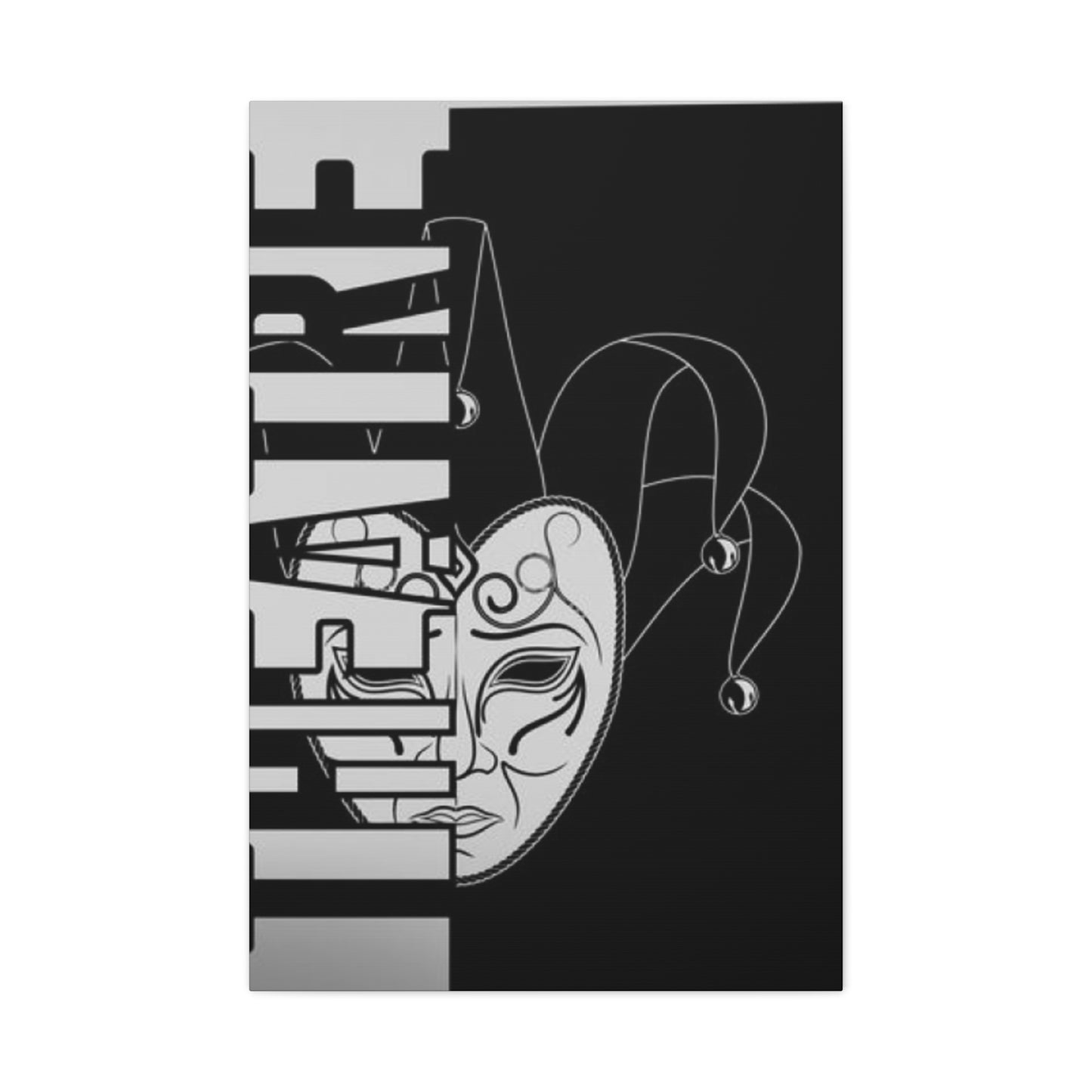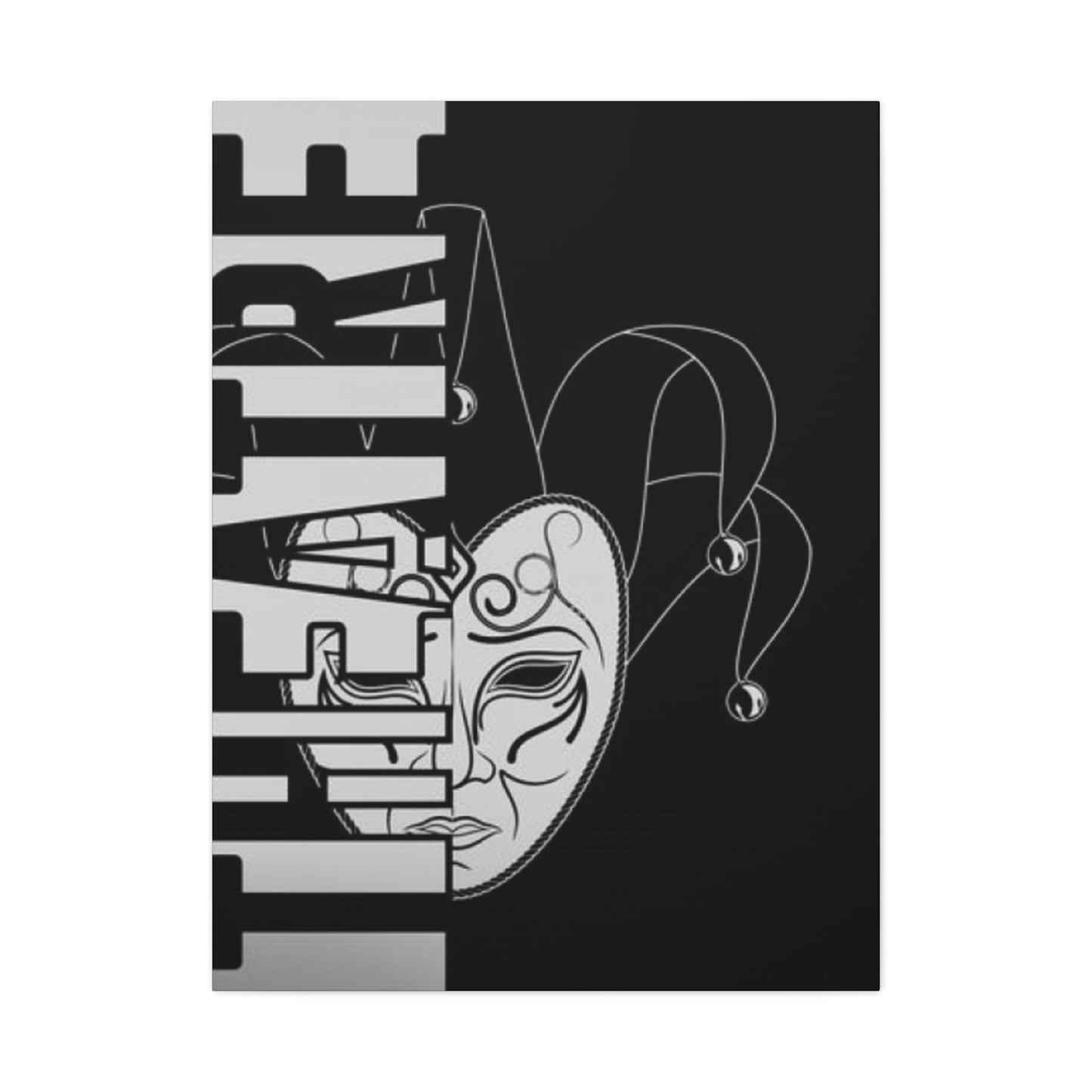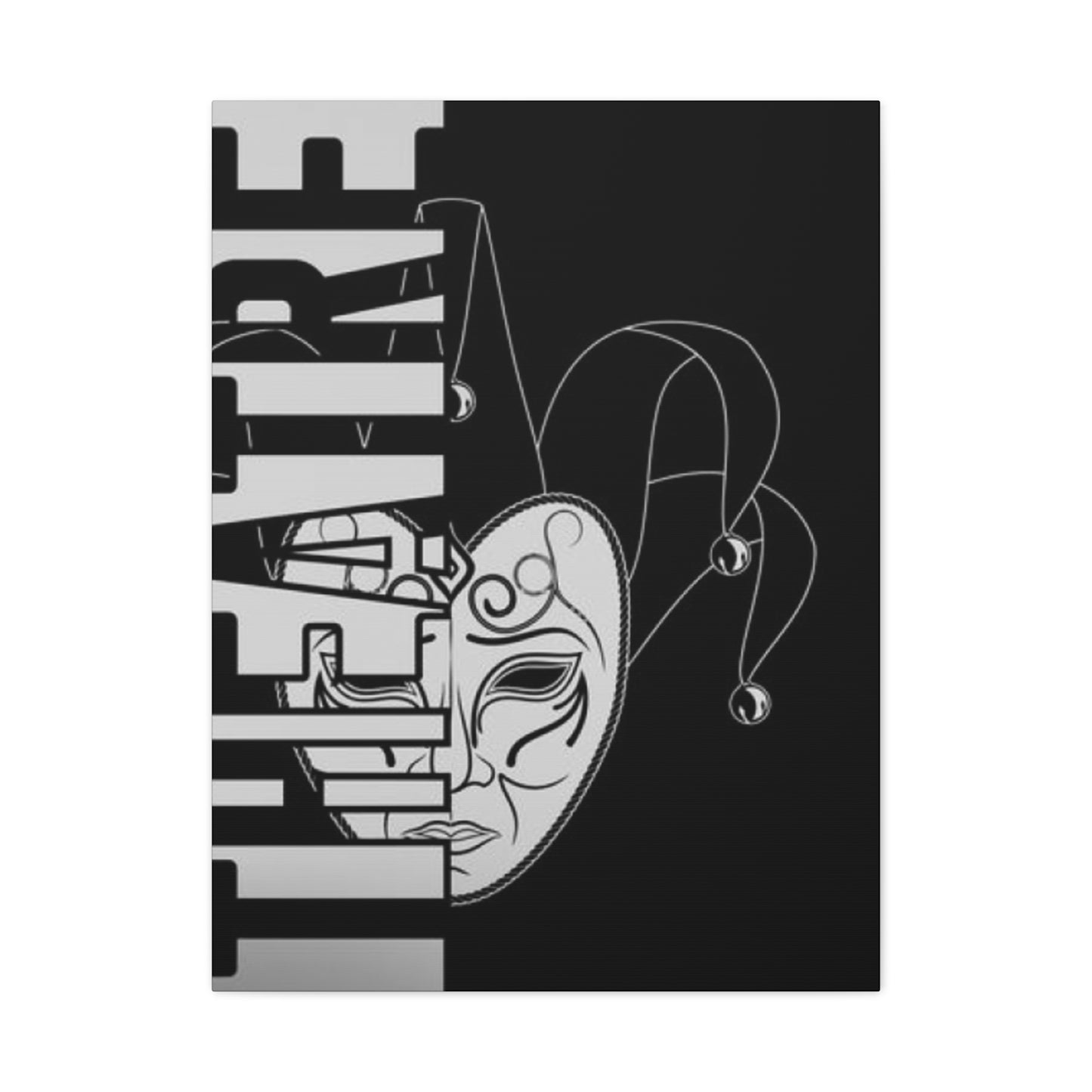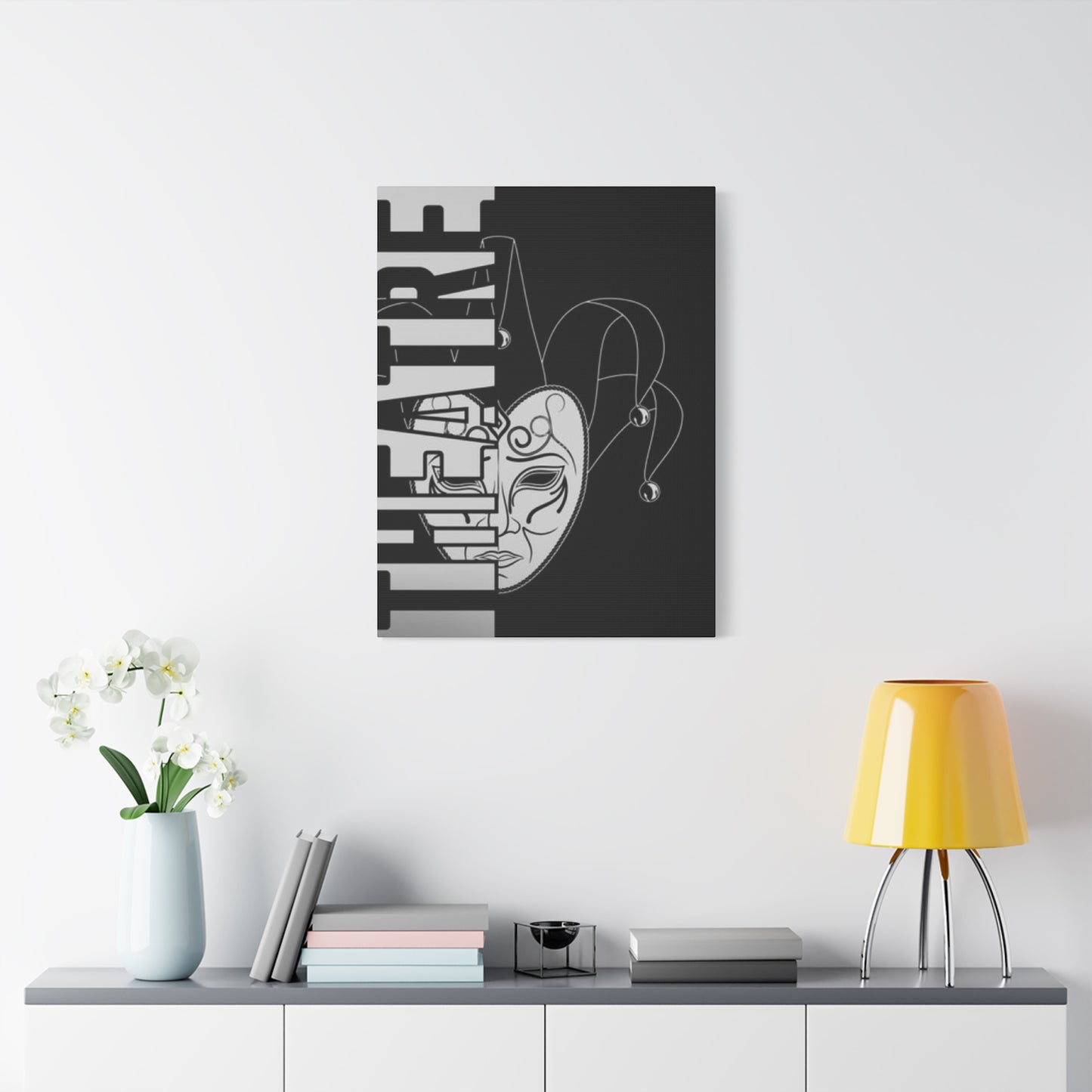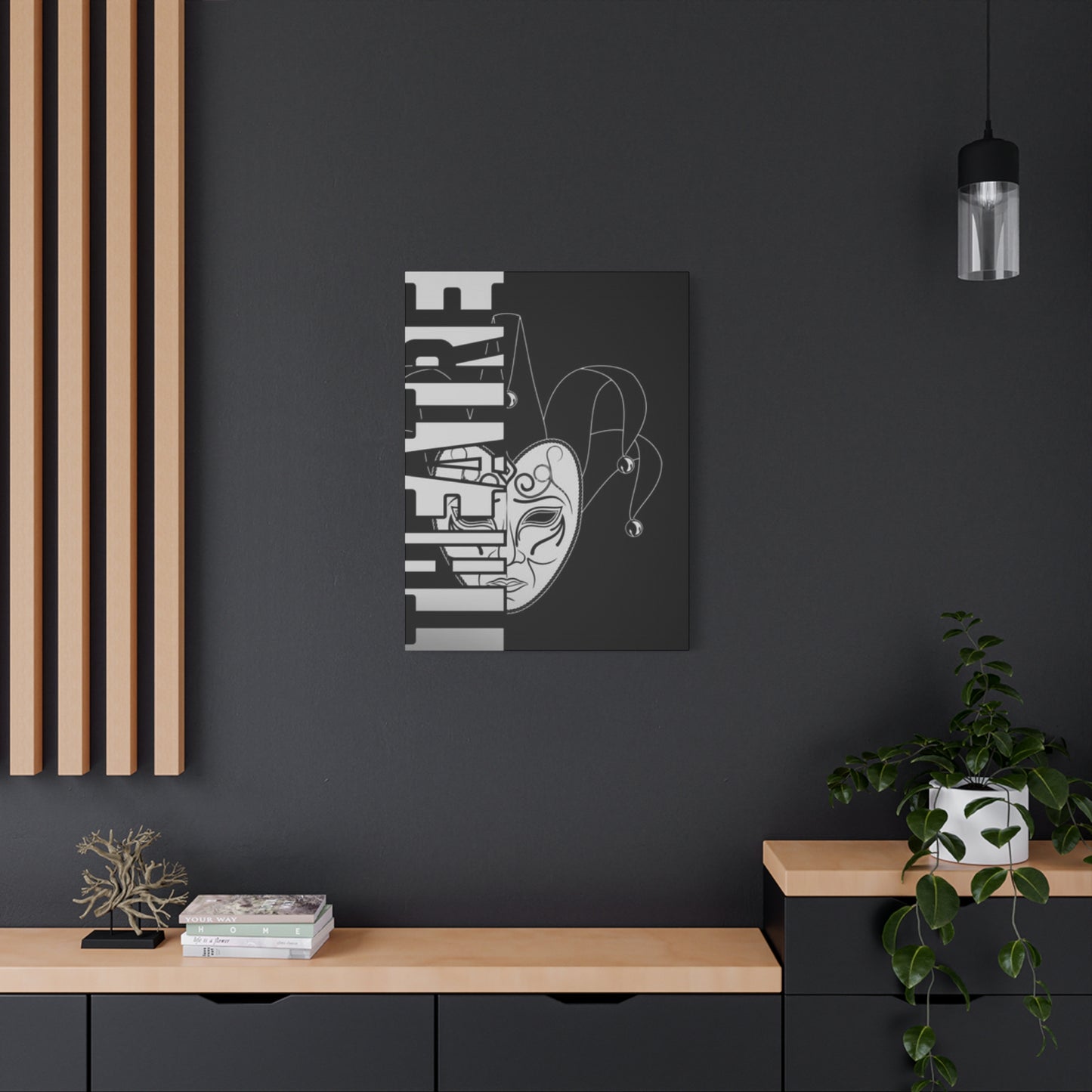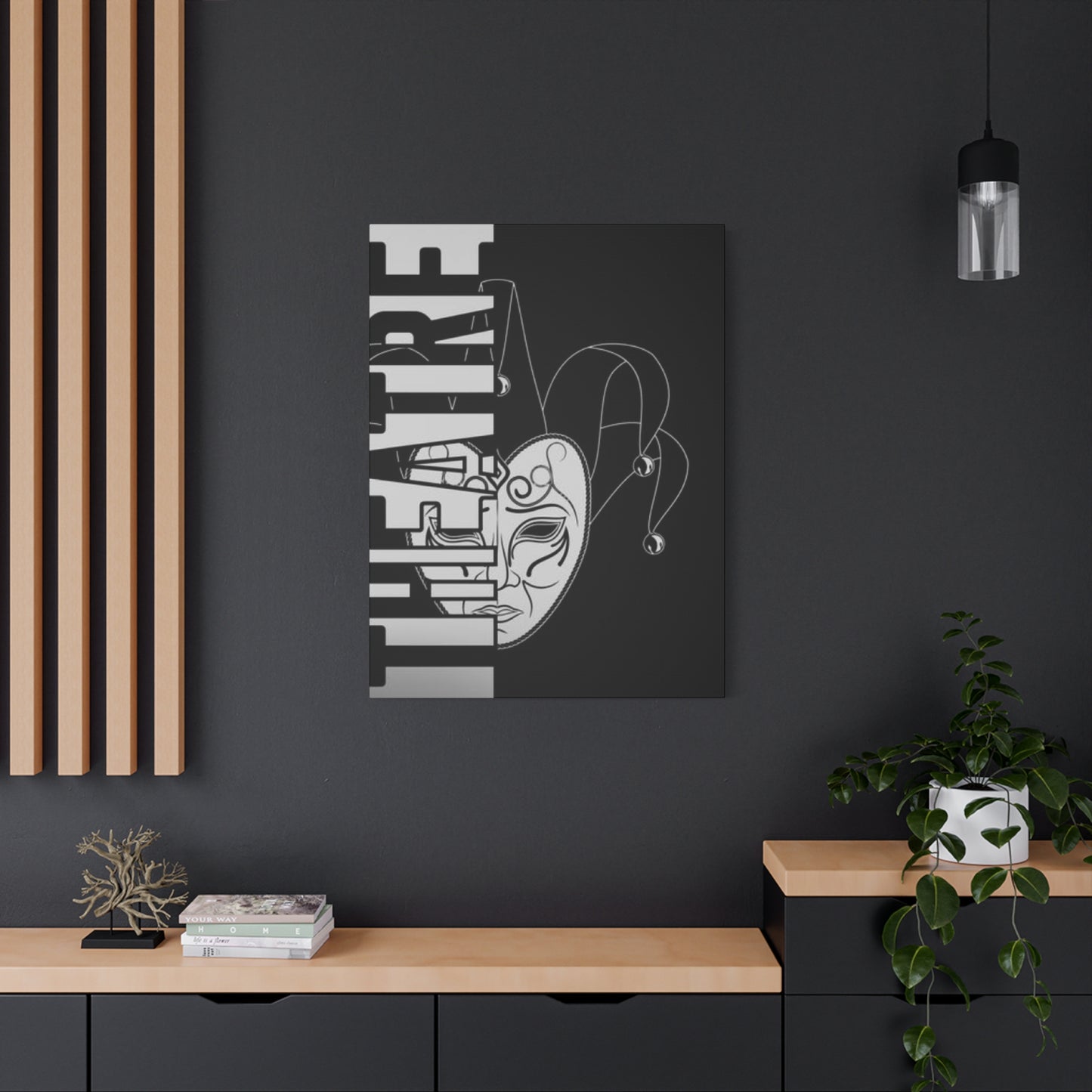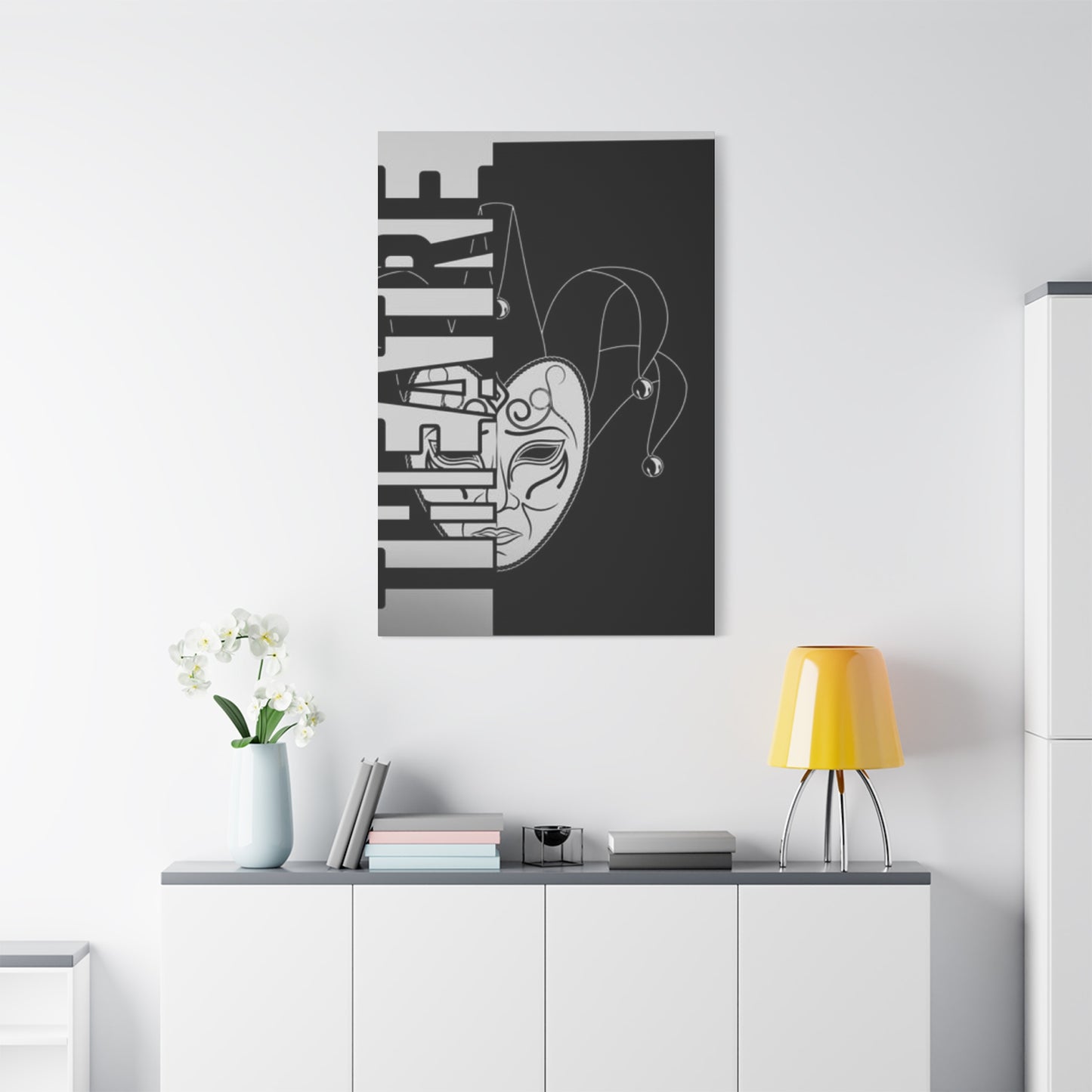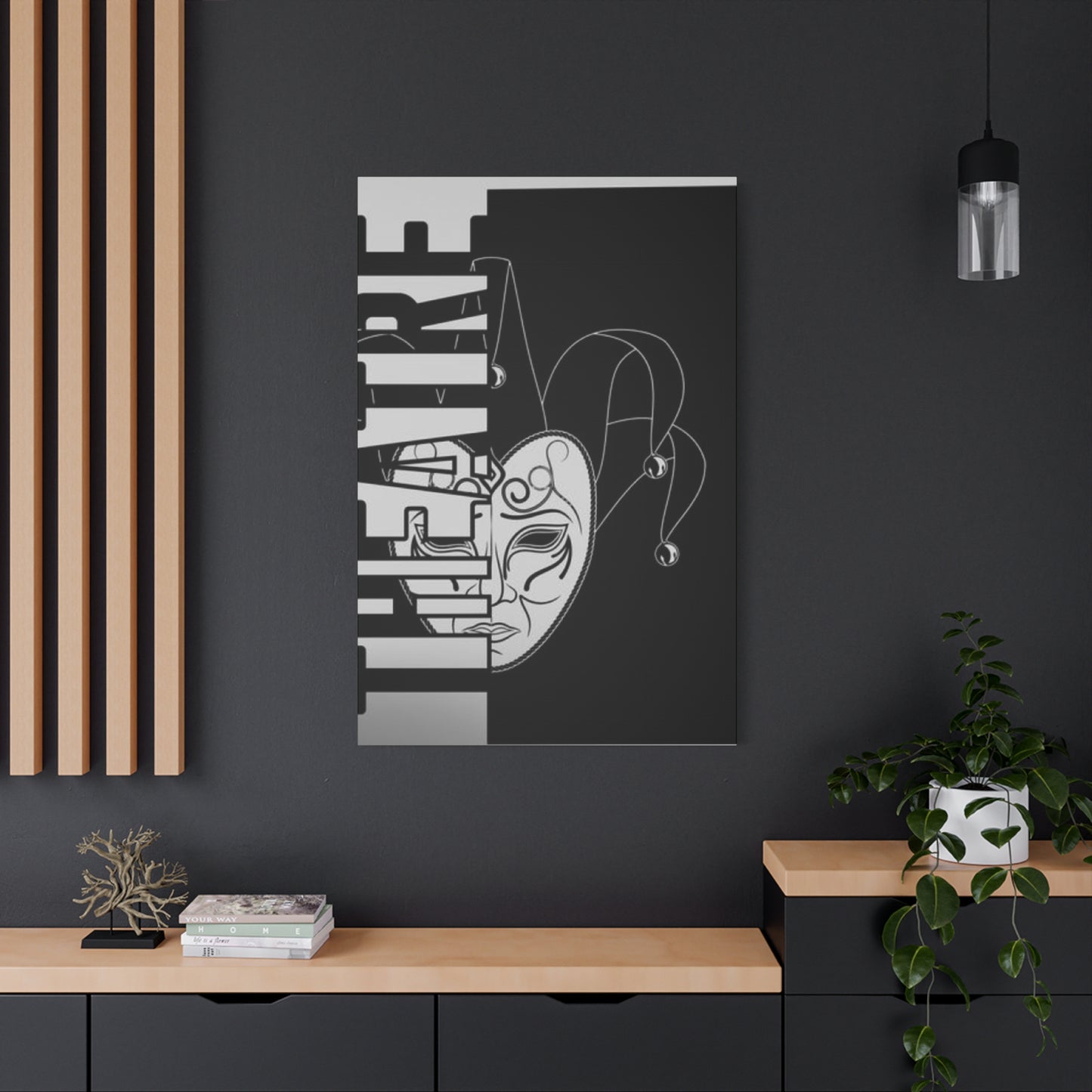Dramatic theater Joker Wall art: Revolutionary Wall Décor for Modern Spaces
The intersection of cinematic excellence and home decoration has created an entirely new category of interior design elements. Among these innovations, theater-inspired joker canvas prints stand as powerful statements that transform ordinary rooms into extraordinary spaces. These artistic pieces capture the essence of one of cinema's most compelling characters while serving as sophisticated décor elements that appeal to diverse aesthetic preferences.
Canvas art featuring theatrical joker imagery represents more than simple decoration. These pieces embody cultural moments, artistic movements, and personal expressions that resonate with collectors and casual enthusiasts alike. The popularity of such artwork stems from its ability to merge entertainment appreciation with genuine artistic merit, creating pieces that function both as conversation starters and as meaningful additions to carefully curated spaces.
The market for theater-based character artwork has expanded dramatically in recent years, driven by increasing recognition of popular culture's artistic value. Joker-themed canvas prints occupy a unique position within this market, appealing to audiences who appreciate complex narratives, visual storytelling, and the darker aspects of human psychology explored through entertainment media. These pieces transcend typical movie merchandise, elevating fan appreciation into legitimate art collection.
The Evolution of Character-Based Canvas Artwork
Character-driven canvas art has undergone remarkable transformation over the past decades. What began as simple reproductions of movie posters has evolved into sophisticated artistic interpretations that rival traditional art forms in complexity and execution. This evolution reflects broader changes in how society perceives and values popular entertainment as a legitimate artistic medium worthy of serious consideration.
Early examples of character-based wall art typically featured straightforward photographic reproductions with minimal artistic interpretation. These pieces served primarily as nostalgia triggers or simple expressions of fandom. However, as digital art techniques advanced and artists began exploring more creative approaches to beloved characters, the quality and sophistication of available pieces increased dramatically.
Contemporary theater joker canvas prints showcase diverse artistic styles ranging from photorealistic renderings to abstract interpretations. Some pieces emphasize the character's theatrical makeup and costuming, while others focus on emotional depth and psychological complexity. This variety ensures that collectors can find pieces matching their specific aesthetic preferences while maintaining thematic consistency with the character's essential nature.
The transition from simple fan merchandise to legitimate collectible art occurred gradually as artists recognized the commercial potential of high-quality character interpretations. Professional artists began creating original works inspired by theatrical characters, bringing fine art techniques to popular culture subjects. This shift elevated the entire category, establishing character-based canvas art as a respected subcategory within contemporary art markets.
Digital printing technology played a crucial role in this evolution by making high-quality reproductions accessible to broader audiences. Advanced printing techniques can now reproduce subtle color gradations, fine details, and complex textures that were previously impossible with standard printing methods. These technological improvements allow artists to create pieces with museum-quality production values at consumer-friendly price points.
Artistic Styles in Theater Character Canvas Prints
The range of artistic approaches applied to joker theater imagery demonstrates the versatility of this subject matter. Each style offers distinct aesthetic qualities and emotional impacts, allowing collectors to select pieces that align with their personal tastes and existing décor schemes. Understanding these stylistic variations helps buyers make informed decisions about which pieces best serve their decorative and expressive needs.
Photorealistic interpretations capture the character with striking accuracy, reproducing every detail of makeup, costume, and expression. These pieces appeal to collectors who appreciate technical excellence and want artwork that faithfully represents specific theatrical portrayals. The level of detail in photorealistic prints creates immersive viewing experiences that draw observers into the character's world, making these pieces particularly effective as focal points in entertainment spaces.
Abstract and expressionistic approaches reimagine the character through color, form, and composition rather than literal representation. These interpretations emphasize emotional impact over accurate depiction, using bold colors, dynamic brushwork, and unconventional compositions to convey the character's psychological complexity. Abstract pieces work exceptionally well in modern and contemporary spaces where they complement minimalist design philosophies while adding visual interest.
Pop art styled prints apply the bold colors, graphic sensibilities, and commercial aesthetics of this influential movement to joker imagery. These pieces often feature high contrast, simplified forms, and vibrant color palettes that create immediate visual impact. Pop art interpretations reference both the character's theatrical origins and the broader tradition of elevating popular culture through artistic treatment, creating layered meanings that reward careful observation.
Dark and moody interpretations emphasize the character's psychological depth and unsettling nature. These pieces typically employ limited color palettes dominated by blacks, grays, and deep reds, creating atmospheric compositions that evoke tension and unease. Such artwork appeals to collectors who appreciate gothic aesthetics and want pieces that make bold statements about their willingness to embrace darker artistic expressions.
Minimalist approaches strip the character down to essential elements, using simplified forms and limited details to create striking compositions. These pieces demonstrate how effectively chosen details can convey character identity without comprehensive representation. Minimalist joker prints work particularly well in spaces where understated elegance is preferred, proving that powerful statements can be made through restraint rather than excess.
Mixed media interpretations combine multiple artistic techniques and materials to create complex, textured pieces. These artworks might incorporate paint splatters, collage elements, digital manipulation, and traditional illustration techniques within single compositions. The resulting pieces offer visual richness and complexity that reveals new details upon repeated viewing, making them ideal for collectors who appreciate layered artwork.
Psychological Impact of Character Artwork in Living Spaces
The presence of character-based artwork in residential and commercial spaces creates psychological effects that extend beyond simple aesthetic appreciation. These impacts influence mood, behavior, and social interaction in ways that make careful artwork selection an important aspect of effective interior design. Understanding these psychological dimensions helps collectors choose pieces that enhance their living environments in desired ways.
Character artwork serves as a form of identity expression, allowing individuals to communicate aspects of their personality, interests, and values without verbal explanation. Displaying joker theater prints signals sophistication, appreciation for complex narratives, and willingness to engage with darker thematic content. These nonverbal communications shape how visitors perceive space owners and facilitate connections between people sharing similar interests.
The emotional resonance of theatrical character imagery can significantly influence ambient mood within spaces. Darker interpretations create atmospheric, contemplative environments that encourage introspection and serious conversation. These pieces work well in private spaces or areas designed for quiet reflection. Conversely, more vibrant or humorous interpretations can energize spaces and create welcoming, engaging atmospheres appropriate for social gathering areas.
Research in environmental psychology demonstrates that artwork selection affects stress levels, creativity, and overall wellbeing. Carefully chosen character prints can reduce stress by providing positive associations with enjoyed entertainment experiences. For fans of theatrical performances, seeing beloved character imagery triggers pleasant memories and emotional responses that contribute to positive mental states. This connection between visual environment and emotional wellbeing makes thoughtful artwork selection a meaningful investment in quality of life.
The conversational value of distinctive artwork should not be underestimated. Striking joker canvas prints naturally attract attention and prompt discussion, serving as social catalysts that ease initial awkwardness and provide common ground for interaction. This function proves particularly valuable in professional spaces where creating comfortable, engaging environments supports business objectives. Artwork that stimulates conversation while reflecting professional sophistication helps establish desired atmospheres in offices, studios, and client-facing spaces.
Personal motivation and inspiration represent another psychological dimension of character artwork. The joker character embodies themes of resilience, complexity, and refusal to conform to conventional expectations. These qualities can serve as daily reminders of personal values and goals. Seeing such imagery regularly reinforces these concepts, potentially influencing behavior and decision-making in subtle but meaningful ways.
Selecting Appropriate Dimensions for Maximum Impact
Choosing correct dimensions for canvas artwork represents one of the most critical decisions in the selection process. Improperly sized pieces can overwhelm small spaces or disappear ineffectively in large rooms, while appropriately scaled artwork creates visual harmony and maximizes aesthetic impact. Several factors influence ideal sizing decisions, and understanding these considerations ensures successful integration of new pieces into existing environments.
Wall space availability provides the most obvious constraint on artwork dimensions. Accurate measurement of available wall space must account for furniture placement, architectural features, and traffic patterns. Effective artwork should dominate its wall section without appearing cramped or overwhelmed by surrounding elements. As a general guideline, canvas prints should occupy approximately two-thirds to three-quarters of the available wall width to create balanced, intentional compositions.
Viewing distance significantly affects perceived scale and appropriate sizing. Artwork viewed primarily from close range can effectively communicate through smaller dimensions, as observers can appreciate fine details and subtle elements. Pieces intended to anchor large rooms or be viewed from greater distances require larger dimensions to maintain visual presence and impact. Considering primary viewing positions during the selection process prevents disappointing results after installation.
Ceiling height influences optimal vertical dimensions for canvas artwork. Rooms with standard ceiling heights accommodate medium to moderately large pieces without creating visual imbalance. Spaces with high ceilings can support dramatically oversized pieces that would overwhelm rooms with lower ceilings. The relationship between ceiling height and artwork dimensions affects perceived room proportions, making this consideration essential for maintaining pleasing spatial relationships.
Multiple piece installations offer flexibility in filling wall space while creating dynamic compositions. Triptychs and other multi-panel arrangements allow collectors to achieve large overall dimensions while maintaining manageable individual panel sizes. These arrangements also create visual interest through spatial relationships between panels, adding compositional complexity that single pieces cannot provide. When considering multi-panel options, attention to spacing between panels ensures cohesive rather than fragmented appearances.
Room function influences appropriate artwork dimensions. Intimate spaces like bedrooms often benefit from moderately sized pieces that create presence without overwhelming. Social spaces can accommodate larger, more dramatic pieces that serve as conversation focal points. Professional environments typically require carefully balanced sizing that appears substantial and professional without dominating spaces needed for functional activities.
Color Psychology in Theater Character Canvas Selection
Color choices in joker-themed artwork carry significant psychological and aesthetic implications that affect how pieces interact with spaces and influence occupant experiences. Understanding color psychology helps collectors select pieces that support desired atmospheric qualities while complementing existing color schemes. The emotional and perceptual effects of color make this consideration essential for successful artwork integration.
Red dominates many joker interpretations, appearing in makeup, clothing, and background elements. This powerful color carries intense emotional associations including passion, danger, energy, and aggression. In artwork, red creates visual excitement and draws immediate attention. Pieces featuring prominent red elements work well as focal points in neutral spaces where their intensity stands out effectively. However, extensive red in living spaces can feel overwhelming, so balancing red-heavy artwork with calming surrounding elements prevents visual fatigue.
Purple represents another color strongly associated with joker imagery, particularly in traditional theatrical interpretations. This color combines the energy of red with the calm of blue, creating associations with creativity, mystery, and ambiguity. Purple-dominant artwork adds sophistication and dramatic flair to spaces without the aggressive intensity of red. These pieces complement both warm and cool color schemes, making them versatile choices for diverse interior styles.
Black and white compositions emphasize contrast, drama, and timeless aesthetic appeal. Monochromatic joker prints focus attention on form, texture, and composition rather than color relationships. These pieces integrate easily into virtually any color scheme and maintain relevance as trends evolve. Black and white artwork appeals to collectors seeking sophisticated, gallery-quality pieces that won't clash with future décor changes.
Green appears in some joker interpretations, particularly those emphasizing chaos and madness. This color's psychological associations include growth, sickness, envy, and instability depending on shade and context. Green-dominant pieces create unsettling, atmospheric effects appropriate for spaces designed to feel edgy or unconventional. These works particularly appeal to collectors drawn to the character's more disturbing psychological dimensions.
Multicolored interpretations incorporating diverse hues create energetic, visually complex pieces. These artworks work best in spaces that can accommodate their visual intensity without competing with other strong design elements. Multicolored pieces serve well in creative spaces, entertainment areas, and other environments where visual stimulation supports the space's purpose.
Warm color palettes featuring reds, oranges, and yellows create energizing, welcoming atmospheres. Joker artwork utilizing warm colors feels more accessible and less intimidating than cooler interpretations, making these pieces suitable for social spaces where comfortable, engaging environments are desired. Warm-toned artwork also complements traditional and rustic interior styles that emphasize natural materials and earth tones.
Cool color palettes dominated by blues, purples, and grays create calming, contemplative atmospheres. These pieces feel more cerebral and less emotionally aggressive than warm-toned alternatives. Cool-colored joker prints work effectively in professional environments, private studies, and other spaces where focus and calm are prioritized over energy and excitement.
Material Quality and Production Techniques
The physical characteristics of canvas prints significantly affect their appearance, durability, and value. High-quality materials and production techniques separate premium artwork from inferior alternatives, justifying investment in well-produced pieces. Understanding these technical aspects helps collectors make informed purchasing decisions and ensures satisfaction with acquisitions.
Canvas substrate quality varies considerably across price points. Premium canvases utilize heavy-weight cotton or cotton-blend materials that resist warping, stretching, and deterioration over time. These materials accept ink better than synthetic alternatives, resulting in richer colors and sharper details. Lower quality canvases may use lightweight synthetic materials prone to sagging and discoloration, leading to disappointing long-term results. Examining canvas weight and composition before purchase prevents future disappointment.
Ink quality directly impacts color accuracy, vibrancy, and longevity. Professional-grade pigment-based inks resist fading far more effectively than dye-based alternatives, maintaining their appearance for decades when properly displayed. UV-resistant inks provide additional protection against light exposure, extending artwork lifespan even in bright spaces. While premium inks increase production costs, their superior performance justifies the investment for serious collectors.
Printing technology determines achievable detail levels and color accuracy. Modern giclée printing produces museum-quality reproductions with exceptional resolution and color fidelity. This technique sprays microscopic ink droplets onto canvas, creating smooth color gradations and fine details impossible with traditional printing methods. Lower-cost digital printing may produce satisfactory results for casual display but lacks the quality serious collectors demand.
Protective coatings enhance durability and maintain appearance over time. Clear acrylic or varnish coatings protect canvas surfaces from dust, moisture, and minor physical contact while preserving color vibrancy. These coatings should be applied professionally to ensure even coverage without altering the artwork's appearance. Some premium pieces include UV-protective coatings that extend lifespan by blocking damaging light wavelengths.
Stretching and mounting quality affects both appearance and longevity. Professional stretching pulls canvas taut across wooden frames, eliminating wrinkles and creating smooth, professional surfaces. Gallery-wrapped edges that continue the image around frame sides create polished, finished appearances suitable for frameless display. Poorly stretched canvases develop wrinkles, waves, and sagging that detract from visual impact and suggest inferior quality.
Frame options range from frameless gallery wraps to elaborate traditional frames. Gallery wraps create modern, minimalist presentations ideal for contemporary spaces. Traditional frames add formal elegance and protection, making them appropriate for professional environments and more traditional interior styles. Frame selection should complement both the artwork and surrounding décor to create cohesive visual presentations.
Placement Strategies for Maximum Visual Impact
Strategic placement of canvas artwork dramatically affects its visual impact and integration within spaces. Location decisions should account for viewing angles, lighting conditions, surrounding elements, and functional considerations. Thoughtful placement transforms good artwork into exceptional design features that enhance entire environments.
Eye level positioning represents the most fundamental placement principle. Artwork centers should typically align with average human eye level, approximately 57 to 60 inches from the floor. This positioning creates comfortable viewing that doesn't require looking excessively up or down. In spaces where viewing occurs primarily while seated, appropriate heights decrease accordingly to maintain comfortable sightlines.
Lighting conditions dramatically affect artwork appearance. Natural light showcases colors and details beautifully but introduces fading risks with prolonged exposure. Positioning artwork away from direct sunlight protects against deterioration while allowing ambient natural light to illuminate pieces. Artificial lighting should illuminate artwork without creating glare or hot spots. Adjustable track lighting or picture lights offer flexibility for highlighting pieces effectively while avoiding common lighting problems.
Background considerations influence how artwork integrates with surroundings. Canvas prints stand out most effectively against contrasting backgrounds. Dark artwork pops against light walls, while lighter pieces shine against darker backgrounds. Busy wallpapers or textured walls compete with artwork for attention, potentially creating visual chaos. Clean, simple backgrounds allow artwork to dominate as intended without competing distractions.
Surrounding furniture and décor elements should complement rather than compete with artwork. Furniture arrangements that orient toward artwork create intentional viewing experiences and emphasize pieces as focal points. Color coordination between artwork and surrounding elements creates cohesive appearances without requiring exact matches. Pulling accent colors from artwork into textiles, accessories, or other décor elements ties compositions together effectively.
Grouping strategies affect overall visual impact when displaying multiple pieces. Symmetrical arrangements create formal, ordered appearances appropriate for traditional spaces. Asymmetrical groupings feel more dynamic and contemporary, working well in modern environments. When grouping multiple pieces, maintaining consistent spacing between pieces creates intentional, cohesive appearances rather than haphazard collections.
Architectural features influence optimal placement decisions. Placing artwork above fireplaces, console tables, or other furniture creates natural focal points that anchor rooms. Alcoves and recessed areas provide opportunities for highlighted displays that draw attention to pieces. Large blank walls in open spaces require substantial artwork to prevent spaces from feeling empty and incomplete.
Room function considerations ensure artwork placement supports practical space usage. Avoiding placement directly above seating prevents uncomfortable viewing angles. Keeping artwork away from high-traffic areas protects against accidental damage. In professional spaces, positioning artwork where clients naturally look during conversations maximizes exposure and impact.
Care and Maintenance for Long-Term Preservation
Proper care and maintenance extend canvas artwork lifespan and preserve appearance quality. While canvas prints require less intensive care than original paintings, following basic preservation practices protects investments and ensures pieces remain attractive for years. Understanding these care requirements prevents common problems that compromise artwork condition.
Dusting represents the most basic and frequent maintenance task. Light dust accumulation occurs naturally over time, dulling colors and creating dingy appearances. Regular gentle dusting with soft, dry cloths or feather dusters removes surface dust without damaging canvas or ink. Avoid applying pressure while dusting to prevent canvas distortion or surface damage. Microfiber cloths effectively capture dust without scratching surfaces or leaving lint behind.
Cleaning beyond simple dusting requires caution to avoid damage. For more stubborn dirt or grime, very lightly dampened cloths can clean canvas surfaces when used carefully. Excess moisture risks warping canvas or causing ink runs, so cloths should be barely damp and immediately followed with dry cloth blotting. Never spray cleaners directly onto canvas. For serious cleaning needs, professional art conservation services provide safe, effective solutions.
Humidity control protects canvas artwork from warping, mold growth, and other moisture-related damage. Ideal humidity levels for art preservation range from 40 to 60 percent. Higher humidity risks mold and mildew growth that stains or destroys canvas. Lower humidity causes canvas materials to become brittle and prone to cracking. In climates with extreme humidity variations, dehumidifiers or humidifiers maintain stable conditions that protect artwork investments.
Temperature stability prevents physical stress on canvas materials. Extreme temperatures and temperature fluctuations cause expansion and contraction that stress canvas and mounting systems. Maintaining moderate, stable temperatures between 65 and 75 degrees Fahrenheit protects against these problems. Avoid placing artwork near heating vents, fireplaces, or air conditioning units where temperature extremes or rapid changes occur.
Sun exposure represents one of the most significant threats to canvas artwork longevity. Direct sunlight causes fading, discoloration, and material degradation that permanently damages pieces. Even indirect natural light causes gradual fading over extended periods. Positioning artwork away from windows, using UV-filtering window treatments, and selecting pieces with UV-resistant inks all help mitigate sun damage risks.
Physical protection prevents common damage from impacts, scratches, and other physical contact. Avoid hanging artwork in high-traffic areas where accidental contact is likely. When moving or handling canvas prints, support pieces from bottom edges to prevent stress on hanging hardware. Never touch canvas surfaces directly, as oils from hands can create permanent stains or degradation.
Professional inspection and maintenance services provide expert care for valuable pieces. Professional conservators can address problems beyond routine home care, including structural repairs, professional cleaning, and protective treatments. Periodic professional evaluations identify emerging problems before they become serious, allowing preventive interventions that extend artwork lifespan.
Cultural Significance of Theatrical Character Artwork
Theater character artwork occupies a unique position at the intersection of popular entertainment and traditional art forms. These pieces reflect broader cultural conversations about the boundaries between high and low art, the artistic merit of popular entertainment, and the role of commercial media in contemporary culture. Understanding these cultural dimensions adds depth to appreciation of character-based canvas art.
The elevation of entertainment characters to fine art subjects represents a relatively recent cultural shift. Traditional art hierarchies placed subjects drawn from classical literature, history, and elite culture above popular entertainment. However, postmodern perspectives challenged these hierarchies, arguing that artistic merit exists independently of subject matter prestige. This philosophical shift opened spaces for character-based artwork to receive serious artistic consideration.
Pop culture art movements legitimized entertainment characters as worthy artistic subjects. Artists like Andy Warhol demonstrated that commercial subjects could carry the same artistic significance as traditional fine art subjects. This precedent established pathways for contemporary artists to explore theatrical characters with the same seriousness previously reserved for classical subjects. Character artwork now appears in galleries alongside traditional fine art, reflecting acceptance of these pieces as legitimate artistic expressions.
Collecting character artwork has evolved from niche fan activity to mainstream art collecting. Serious collectors now seek high-quality character pieces as investments and aesthetic statements rather than simple merchandise. This shift reflects recognition that exceptional character artwork demonstrates genuine artistic merit independent of its commercial origins. The growing market for premium character canvas prints indicates this category's establishment as a legitimate collecting area.
Generational differences in art appreciation favor character-based artwork. Younger collectors who grew up with rich visual media embrace entertainment-inspired art more readily than traditional collectors. This demographic shift ensures continued growth in character artwork markets as younger collectors gain purchasing power. The integration of theatrical characters into mainstream art collecting reflects broader changes in cultural values and aesthetic preferences.
The joker character specifically carries cultural significance beyond simple entertainment value. This character explores psychological complexity, social alienation, and moral ambiguity that resonate with contemporary cultural concerns. Artwork featuring this character engages with these deeper themes while maintaining accessibility through familiar visual references. This combination of depth and accessibility makes such artwork particularly appealing to collectors seeking meaningful pieces that don't require extensive art historical knowledge to appreciate.
Commercial Applications in Business Environments
Theater character canvas artwork serves valuable functions in commercial and professional environments beyond residential applications. These pieces create distinctive atmospheres, communicate brand identities, and enhance customer experiences in ways that support business objectives. Understanding these commercial applications helps business owners make strategic artwork selections that contribute to operational success.
Entertainment venue decoration represents an obvious application where theatrical character artwork enhances thematic consistency. Cinemas, theaters, entertainment complexes, and similar businesses benefit from artwork that reinforces their entertainment focus. Joker canvas prints work particularly well in these environments, creating sophisticated decoration that appeals to adult audiences while maintaining clear connections to entertainment themes. These pieces elevate ambiance beyond typical promotional materials, creating more polished, intentional atmospheres.
Creative professional offices benefit from artwork that signals innovation, creativity, and cultural awareness. Design studios, advertising agencies, production companies, and similar businesses often incorporate character artwork to establish their creative credentials. Such pieces demonstrate that businesses understand and appreciate contemporary culture while creating visually interesting environments that stimulate creativity. Character artwork in professional contexts walks the line between professionalism and creative expression effectively.
Hospitality environments including hotels, restaurants, and bars use distinctive artwork to create memorable atmospheres that differentiate them from competitors. Themed establishments particularly benefit from carefully selected character prints that reinforce their concepts without appearing cheap or amateur. High-quality joker canvas art in upscale bars or hotel lounges creates edgy sophistication that appeals to target demographics while maintaining appropriate refinement.
Retail environments specializing in entertainment merchandise, collectibles, or pop culture goods use character artwork to enhance shopping experiences and establish credibility. Well-selected canvas prints demonstrate product knowledge and passion that resonates with customers. These pieces also create visually interesting environments that encourage browsing and extended store visits, potentially increasing sales.
Gaming and esports facilities incorporate character artwork to create immersive environments that appeal to their target audiences. These spaces benefit from pieces that reflect gaming culture while maintaining polish appropriate for facilities that want to be taken seriously as legitimate competitive venues. Character artwork helps these newer business categories establish visual identities that balance enthusiasm with professionalism.
Corporate break rooms and recreational spaces use character artwork to create relaxing, engaging environments that support employee wellbeing and satisfaction. These pieces provide conversation topics that facilitate social bonding and help employees decompress during breaks. Artwork that reflects employee interests demonstrates that organizations value creating positive work environments, potentially improving morale and retention.
Investment Potential and Value Considerations
The market for high-quality character canvas artwork has matured into a legitimate collecting category with investment potential. While not all pieces appreciate significantly, certain factors indicate artwork more likely to gain value over time. Understanding these investment considerations helps collectors make purchases that provide both aesthetic satisfaction and potential financial returns.
Artist reputation significantly affects artwork value and appreciation potential. Pieces created by recognized artists with established followings command higher initial prices and demonstrate stronger appreciation potential than anonymous mass-produced alternatives. Researching artist backgrounds, previous sales, and critical reception provides insight into likely value trajectories. Limited collaborations between popular characters and respected artists create particularly desirable pieces.
Edition limitations increase scarcity and value. Limited edition prints numbered and certified by artists command premium prices compared to unlimited runs. Lower edition numbers within limited runs often trade at premiums over higher numbers. Certificate of authenticity documentation proves edition status and establishes provenance that supports future sales. Open edition prints rarely appreciate significantly regardless of quality since supply remains unlimited.
Production quality affects both initial value and appreciation potential. Museum-quality materials, professional printing techniques, and expert finishing command higher prices that often grow over time. Inferior production quality limits initial appeal and future value regardless of design excellence. Investment-minded collectors prioritize production quality even when purchasing pieces primarily for display rather than speculation.
Cultural moment timing influences certain pieces' value. Artwork released during periods of peak character popularity may appreciate as that popularity creates sustained fan bases. Conversely, pieces tied too specifically to temporary trends risk becoming dated as cultural focus shifts. Balancing current relevance with timeless appeal creates the most stable value propositions.
Market trends in character artwork collecting affect value dynamics. Growing acceptance of entertainment-inspired art as legitimate collecting category lifts the entire market. However, specific character popularity fluctuates based on new entertainment releases and cultural trends. Monitoring market trends helps collectors identify opportune purchase timing and informed selling decisions.
Condition preservation directly affects artwork value retention and appreciation. Well-maintained pieces retain more value than damaged or deteriorated alternatives. Proper display, storage, and care practices represent essential aspects of protecting artwork investments. Documentation of maintenance history and professional conservation work can support value claims during future sales.
Provenance documentation establishes ownership history and authenticity. Complete records including purchase receipts, certificates of authenticity, and prior owner documentation strengthen value claims and facilitate future sales. Building and maintaining comprehensive provenance records should begin at acquisition and continue throughout ownership.
Interior Design Integration Strategies
Successfully integrating theater character canvas artwork into cohesive interior designs requires balancing multiple aesthetic considerations. These pieces make strong statements that can either enhance or clash with surrounding design elements depending on integration approaches. Strategic planning ensures character artwork contributes positively to overall design visions.
Style compatibility represents the first integration consideration. Character artwork spans diverse styles from classical to ultra-modern, making style matching essential. Contemporary spaces with clean lines and minimalist aesthetics pair well with abstract or minimalist character interpretations. Traditional interiors accommodate more classical rendering styles and elaborate framing. Eclectic spaces offer maximum flexibility, allowing mixing of styles when done with sufficient confidence and skill.
Color scheme coordination prevents visual discord between artwork and environments. Artwork colors need not match existing palettes exactly, but should either complement or intentionally contrast in deliberate ways. Pulling accent colors from artwork into textiles, accessories, or other elements creates cohesive appearances. Alternatively, using artwork to introduce bold color contrasts can energize neutral spaces when done intentionally.
Scale relationships between artwork and furniture ensure balanced compositions. Oversized artwork overwhelms small furniture groupings, while undersized pieces disappear behind substantial furnishings. Artwork should anchor furniture groupings without overpowering them. In spaces with substantial furniture, larger artwork maintains visual presence, while more modest furnishings pair better with moderately sized pieces.
Thematic consistency strengthens design cohesion. Rooms with existing entertainment or theatrical themes naturally accommodate character artwork. However, single character pieces can also anchor entirely new themes built around them. Repeating motifs, colors, or styles from character artwork throughout spaces creates unified designs where everything appears intentionally related.
Contrast versus harmony represents a fundamental design decision. Harmonious integration emphasizes similarities between artwork and surroundings, creating peaceful, unified atmospheres. Contrast approaches use artwork to disrupt and energize spaces through differences from surrounding elements. Neither approach is inherently superior, but each creates distinct effects appropriate for different objectives.
Lighting design should highlight artwork while serving broader illumination needs. Dedicated picture lighting draws attention to important pieces while creating visual interest through light variation. Ambient lighting that illuminates entire spaces adequately while allowing artwork lighting to create highlights achieves good balance. Avoiding harsh lighting that creates glare or washes out colors preserves artwork appearance quality.
Layering multiple design elements creates depth and visual interest. Combining character canvas artwork with complementary sculptures, textiles, and accessories builds rich, engaging environments. However, layering requires restraint to avoid cluttered, chaotic results. Each element should contribute meaningfully rather than simply filling space.
Digital Art Revolution and Canvas Printing
The digital art revolution fundamentally transformed how artwork is created, distributed, and consumed. Canvas printing technology democratized access to high-quality artwork while creating new opportunities for artists. Understanding this technological context illuminates contemporary character artwork markets and possibilities.
Digital creation tools enable artistic possibilities impossible with traditional media. Software programs provide unlimited color palettes, perfect precision when desired, and easy experimentation without material costs. Artists can create multiple variations, test compositions instantly, and achieve effects requiring extraordinary skill or physical impossibility with traditional techniques. These capabilities expanded artistic expression while reducing barriers to creating professional-quality work.
Digital distribution eliminated geographic constraints on art markets. Artists now reach global audiences through online galleries and direct sales platforms without requiring physical gallery representation. This democratization allowed talented artists outside traditional art world centers to build audiences and successful careers. For consumers, access to artwork from worldwide artists expanded choices exponentially compared to local gallery options.
Print-on-demand technology revolutionized artwork economics by eliminating inventory requirements and upfront costs. Artists can offer pieces for sale without pre-printing inventory, reducing financial risk while maintaining unlimited availability. Consumers benefit from access to extensive catalogs without waiting for popular pieces to return to stock. This model supported the explosion of character artwork availability.
Quality improvements in digital printing made reproductions nearly indistinguishable from originals for many buyers. Giclée printing produces results rivaling traditional printmaking techniques, with exceptional color accuracy and detail preservation. These quality improvements legitimized digital prints as serious art rather than inferior reproductions, supporting market growth.
Customization possibilities unique to digital production appeal to consumers seeking personalized artwork. Many services offer custom sizing, color adjustments, and even personalized elements within designs. This flexibility allows consumers to acquire artwork perfectly suited to their specific needs rather than compromising with available options.
Environmental considerations increasingly favor digital artwork over traditional media. Digital creation and print-on-demand models reduce waste compared to traditional art production methods. However, energy consumption in digital production and shipping environmental impacts remain concerns requiring continued attention and improvement.
Framing Options and Presentation Methods
Presentation choices significantly affect canvas artwork appearance and integration into spaces. Multiple framing and mounting options offer different aesthetic qualities and practical advantages. Understanding these options helps collectors select presentations that optimize their pieces' visual impact.
Frameless gallery wraps represent the most popular contemporary presentation method. Images continue around canvas edges, creating finished appearances without requiring frames. This approach emphasizes artwork rather than framing, creating modern, minimalist presentations. Gallery wraps work particularly well with contemporary décor while reducing costs compared to custom framing.
Traditional framing adds formal elegance and physical protection. Frames create boundaries that separate artwork from surroundings, focusing attention on images within. Frame styles range from simple modern profiles to elaborate traditional designs. Selecting frames that complement both artwork and surrounding décor ensures cohesive integration. Professional framing allows customization of profiles, finishes, and matting for perfect results.
Floating frames create illusions that artwork floats within frame boundaries. Small gaps between canvas edges and frame interiors produce distinctive shadow lines that add depth and visual interest. This presentation style bridges gallery wraps and traditional framing, offering some benefits of each approach. Floating frames suit contemporary and transitional spaces particularly well.
Shadow boxes provide deep frames that create substantial visual impact while protecting artwork. The depth creates dramatic shadows and three-dimensional effects that make pieces stand out from walls. Shadow boxes work well for valuable pieces deserving extra protection and visual emphasis. However, their substantial profiles require adequate wall space to avoid overwhelming rooms.
Split panel presentations divide images across multiple canvases arranged with spacing between them. This approach creates dynamic compositions with movement and visual interest impossible with single pieces. Spacing between panels becomes part of overall design, requiring careful planning for optimal effect. Multi-panel presentations fill large wall spaces impressively while maintaining manageable individual panel sizes.
Mounting options affect installation ease and security. Simple hanging wire works for most residential applications but may shift over time. French cleats provide secure mounting that prevents shifting while allowing easy removal for cleaning or relocation. Professional installation ensures secure mounting while preventing wall damage that might occur with improper techniques.
Popular Themes in Joker Character Artwork
The joker character's complexity supports diverse thematic interpretations within canvas artwork. Different themes emphasize various aspects of the character's nature and appeal to distinct collector preferences. Understanding these thematic variations helps buyers identify pieces resonating with their specific interests.
Chaos and anarchy themes emphasize the character's role as an agent of disorder. These pieces often feature dynamic compositions, aggressive colors, and unsettling imagery that conveys instability and unpredictability. Visual elements suggesting destruction, upheaval, and broken order reinforce thematic content. Such artwork appeals to collectors drawn to the character's subversive nature and rebellion against social constraints.
Tragic psychology themes explore the character's damaged mental state and traumatic history. These interpretations emphasize vulnerability, pain, and isolation alongside more threatening aspects. Muted colors, introspective expressions, and symbolic elements suggesting suffering characterize this thematic approach. Collectors interested in character depth and psychological complexity particularly appreciate these emotionally nuanced pieces.
Theatrical performance themes celebrate the character's dramatic nature and connection to entertainment. These pieces often incorporate stage elements, spotlight effects, and exaggerated expressions emphasizing performative aspects. Vibrant colors and dramatic compositions create energy and movement. Such artwork appeals to entertainment enthusiasts who appreciate theatrical elements and performative excellence.
Dark humor themes highlight the character's twisted sense of amusement and ironic perspective. These pieces often include visual puns, unsettling contrasts, and imagery that provokes uncomfortable laughter. Balancing menace with humor creates complex emotional responses that reward repeated viewing. Collectors who appreciate dark comedy and satirical perspectives gravitate toward these interpretations.
Iconic imagery themes focus on instantly recognizable visual elements like specific makeup styles, signature props, or memorable poses. These pieces emphasize character recognition and cultural impact rather than complex thematic exploration. Bold, graphic presentations with high visual impact characterize this approach. Fans seeking clear character identification and strong decorative impact prefer these straightforward interpretations.
Philosophical questioning themes use the character as a vehicle for exploring moral ambiguity, social criticism, and existential questions. These pieces may incorporate symbolic elements, text overlays, or compositional choices that prompt contemplation. Muted palettes and thoughtful compositions encourage reflection rather than immediate emotional response. Collectors interested in artwork that stimulates intellectual engagement appreciate these cerebral interpretations.
Building Collections Over Time
Developing thoughtful character artwork collections provides ongoing satisfaction and creates personal galleries reflecting individual taste evolution. Strategic collection building differs from random acquisition, resulting in cohesive groups that gain value as unified collections. Understanding effective collection strategies helps enthusiasts build meaningful assemblages.
Collection focus decisions provide direction and purpose. Some collectors focus on single characters across diverse interpretations, while others collect works by specific artists or within particular styles. Thematic collecting around specific character aspects like chaos, performance, or psychology creates conceptually unified collections. Defining collection parameters early prevents aimless accumulation while allowing focus flexibility as interests develop.
Conclusion
Dramatic theater Joker wall art brings an electrifying energy to modern spaces, transforming any room into a dynamic and thought-provoking environment. The Joker, a character synonymous with chaos, unpredictability, and dark humor, has long been a cultural icon. His theatrical persona, often marked by vivid expressions and exaggerated features, lends itself perfectly to bold, expressive art that challenges traditional decor. By introducing this revolutionary form of wall art into your home, you are not just adding a striking visual element; you are embracing a work of art that conveys deeper themes of duality, societal critique, and raw emotion.
The Joker, especially as portrayed in theatrical performances and films, captures a complex blend of madness and genius, making him the perfect subject for contemporary, dramatic wall art. Whether you opt for a piece that focuses on his iconic smile, his chaotic expressions, or an abstract interpretation of his chaotic nature, these artworks bring a sense of intensity and intrigue to any space. The stark contrasts, rich colors, and dramatic compositions inherent in theater Joker wall art push boundaries and create a powerful visual impact, making them an ideal choice for anyone looking to elevate their home decor with bold and unconventional style.
What makes Joker-themed art so compelling for modern spaces is its versatility. These pieces can effortlessly enhance various interior design styles, from minimalist to industrial, and even bohemian. The dark, intense palette often associated with Joker art—think blacks, reds, deep purples, and stark whites—blends beautifully with modern furnishings. In a sleek, urban loft, a large Joker portrait can serve as a statement piece, instantly drawing attention and becoming the focal point of the room. Alternatively, smaller, more abstract Joker-inspired prints or illustrations can create an edgy, artistic atmosphere without overwhelming the space.
In addition to their aesthetic appeal, dramatic Joker wall art pieces also make a powerful cultural statement. The Joker is, in many ways, a reflection of modern society’s complexities—the tension between order and chaos, the blurred lines between good and evil, and the inherent absurdity in human behavior. Displaying such artwork in your home gives a nod to the character’s ability to challenge conventions, sparking conversations and reflecting the wearer’s own personal engagement with societal norms and artistic expression. These pieces can serve as a conversation starter in living rooms, home offices, or entertainment spaces, adding a layer of intrigue and depth to your home’s decor.
The theatrical aspect of the Joker’s character also makes this art incredibly engaging for those who appreciate performance and drama. For theater enthusiasts or film buffs, Joker wall art transcends traditional decor and transforms your walls into a stage. The intense expressions and exaggerated features of the Joker can evoke a range of emotions—from humor and unease to admiration for the character’s complexity. This emotional response is what makes Joker art so powerful: it goes beyond surface-level decoration and invites viewers to engage with the narrative, the chaos, and the underlying commentary that the character embodies.
For those seeking to create a bold, modern look, Joker wall art is an ideal choice. The mix of high drama and psychological depth gives it a timeless relevance, transcending trends and offering a rebellious, bold energy that enhances any room. It challenges conventional wall decor by turning the Joker’s dark allure into a visual masterpiece that commands attention. Whether displayed in the living room, home theater, or even as a unique focal point in a hallway, Joker art becomes more than just decor—it becomes an expression of personality, culture, and artistic engagement.
In conclusion, dramatic theater Joker wall art is a revolutionary addition to modern spaces, offering a striking combination of intensity, expression, and emotional depth. The Joker’s chaotic, larger-than-life persona is perfectly suited for bold, unconventional artwork that makes a statement and invites reflection. By choosing Joker-themed wall art for your home, you’re embracing a piece of culture that’s as much about personality as it is about design. Whether you’re drawn to the character’s complexity, the artistic style, or the sheer dramatic presence of his image, Joker wall art transforms your space into a compelling narrative, making it a truly unique and thought-provoking element of your home decor.


















